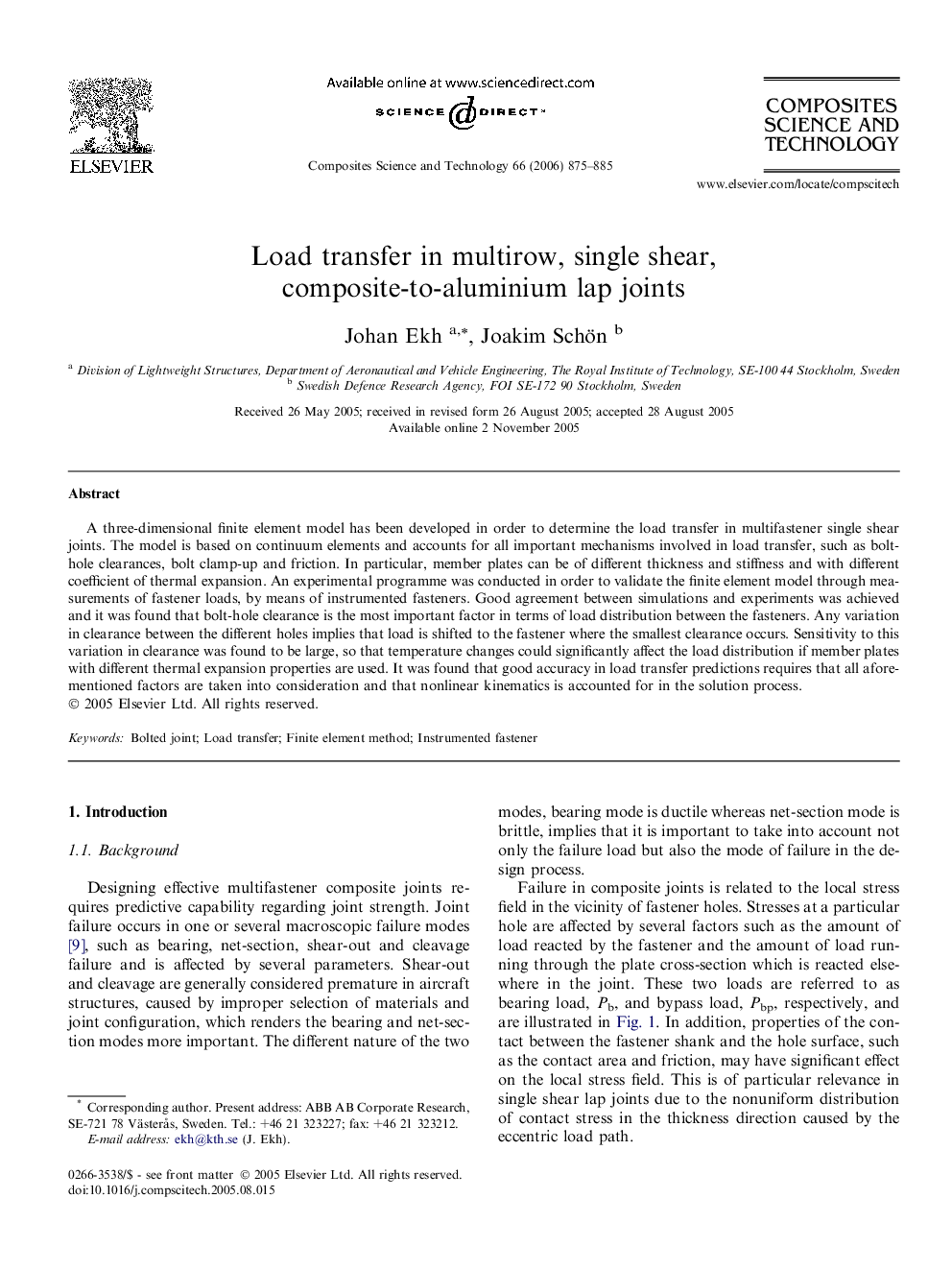| Article ID | Journal | Published Year | Pages | File Type |
|---|---|---|---|---|
| 823118 | Composites Science and Technology | 2006 | 11 Pages |
A three-dimensional finite element model has been developed in order to determine the load transfer in multifastener single shear joints. The model is based on continuum elements and accounts for all important mechanisms involved in load transfer, such as bolt-hole clearances, bolt clamp-up and friction. In particular, member plates can be of different thickness and stiffness and with different coefficient of thermal expansion. An experimental programme was conducted in order to validate the finite element model through measurements of fastener loads, by means of instrumented fasteners. Good agreement between simulations and experiments was achieved and it was found that bolt-hole clearance is the most important factor in terms of load distribution between the fasteners. Any variation in clearance between the different holes implies that load is shifted to the fastener where the smallest clearance occurs. Sensitivity to this variation in clearance was found to be large, so that temperature changes could significantly affect the load distribution if member plates with different thermal expansion properties are used. It was found that good accuracy in load transfer predictions requires that all aforementioned factors are taken into consideration and that nonlinear kinematics is accounted for in the solution process.
